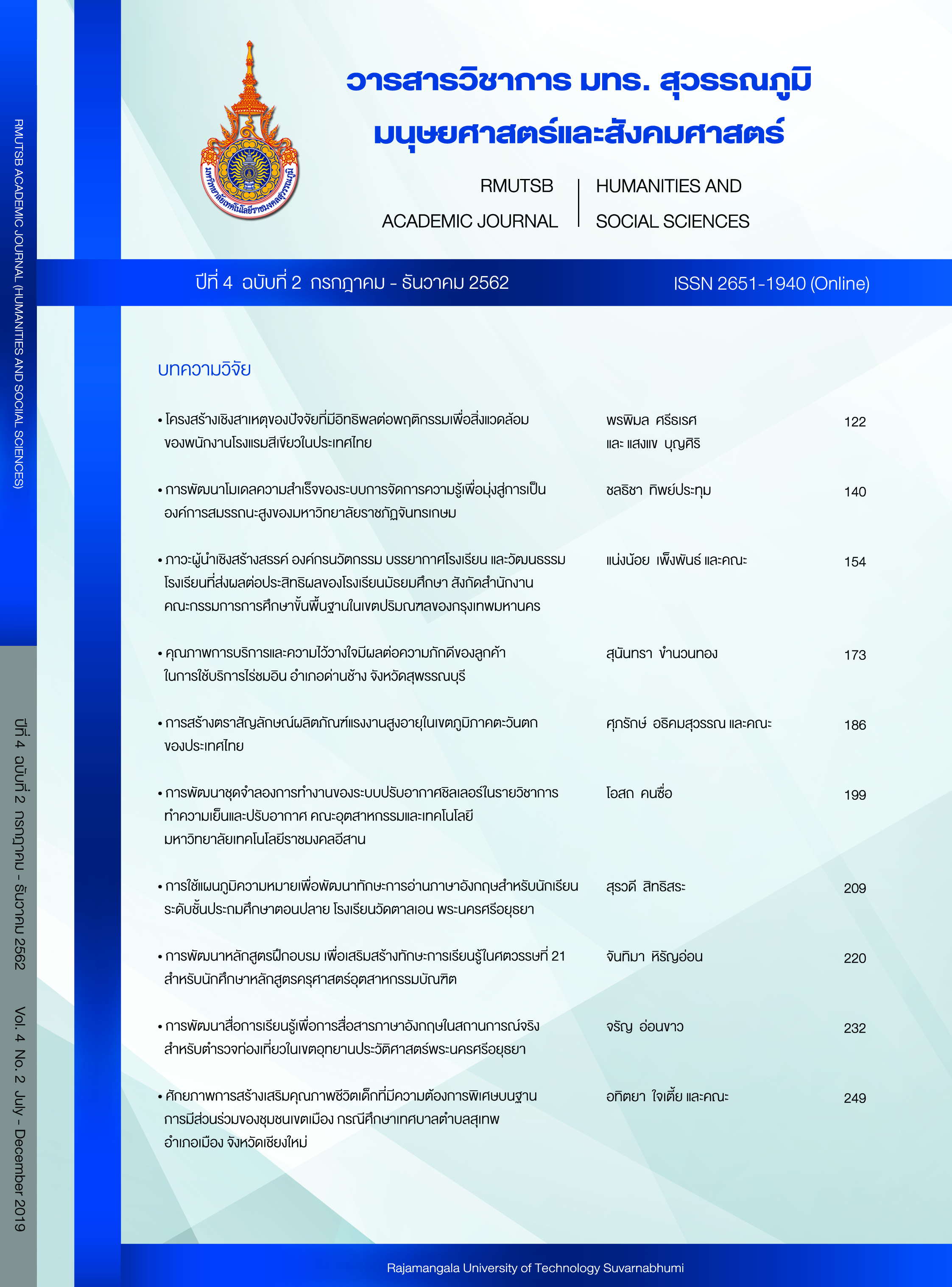The Potential Performance Children with Special needs Quality of Life Development Base on Community Participation in Urban: Case Study Suthep sub - district Municipality Muangchiangmai District, Chiangmai Province
Main Article Content
Abstract
The purposes of this study were to 1) study roles of the health leaders to children with special needs quality of life promotion 2) synthesis community potential performance to children with special needs quality of life promotion. The study was designed by cross-sectional descriptive studies. The number of sample size was 96 community health leaders and 19 stakeholders in Suthep sub-district municipality Muangchiangmai district, Chiangmai province. Data were collected using questionnaires, informal interview and stakeholder group operational seminar. Descriptive statistics and content analysis were used for data analysis. The results indicated that roles of the health leaders were on the modulate level (mean = 1.82±0.48). The SWOT analysis showed readiness of personnel and participation in quality of life development of children with special needs in the community. However, treatment knowledge of personnel and budget allocation from local government organization were still very poor.
Article Details
References
Chaiwatthanakunwanit, S., & Rukspollmuang, C. (2016). Alternative edicatopmal provision model to improve quality of life of children with special needs. Journal of Education Graduate Studies Research, 9(1),192-201. (in Thai)
Charatcharungkiat, N., & Wacharasindhu, A. (2013). Quality of life among caregivers of children with autistic spectrum disorders and associated factors. Journal of Psychiatric Association of Thailand, 58(3), 233-244. (in Thai)
Cronbach, L. J. (1951). Coefficient alpha and the internal structure of tests. Psychometrika, 16, 297-334.
Department of Empowerment of Person with Disabilities. (2017). Information on person with disabilities in Thailand 2018. Bangkok: Ministry of Social Development and Human Security. (in Thai)
Division of Public Health and the Environment. (2016). Annual report 2016. Mimeograph. (in Thai)
Kijpredaborisuthi, B. (1988) Social research methodology. Bangkok: Samcharoen Panich. (in Thai)
Matthew, B. M., & Michael, A. H. (1994). Qualitative data analysis: An expanded sourcebook (2nd ed.). California: SAGE.
National Center for Education Statistic. (2018). Children and youth with disabilities. Retrieved November 21, 2018, from https://nces.ed.gov/programs/coe/indicator_cgg.asp
Nitiwatana, D. (2016). Guidelines for relationship building and support for the welfare system for the disabled: Case study Soknoktean Tumbol, Amphur Phon, Khon Kaen Province. Research Community, 128, 91. (in Thai)
The Global Partnership for Education. (2018). Children with disabilities. Retrieved August 2, 2018, From https://www.globalpartnership.org/focus-areas/children-with-disabilities
Tungpunkom, P., & Chailangkarn, K. (2004). Barriers and needs for autistic children care. Retrieved 2 November 2018, from http://www.jvkk.go.th/researchnew/qrresearch.asp?code=0101779 (in Thai)
Wichai, P., & Phon-ngam, P. (2016). A research and development of driving mechanism for community welfare: A case study in Thapho Sub-District, Muang District, Phitsanulok Province. Humanity and Social Science Journal, 7(1), 103 -127. (in Thai)
World Health Organization (WHO). (2011). World report on disability. Retrieved November 12, 2018, from file:///C:/Users/sm/Downloads /9789240685215_eng.pdf

